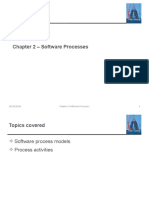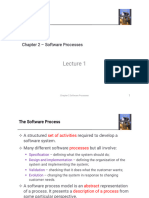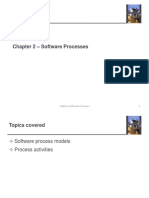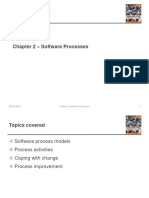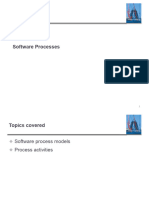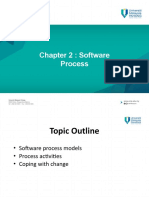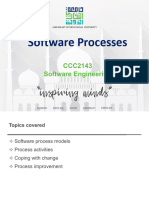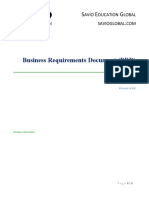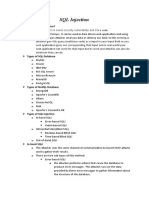0% found this document useful (0 votes)
17 views34 pagesASE Ch2-SoftwareProcess
Chapter 2 discusses software processes, including various models such as waterfall, incremental development, and reuse-oriented development. It outlines fundamental activities like requirements engineering, design and implementation, validation, and evolution, emphasizing the importance of coping with change through methods like prototyping and iterative delivery. The chapter highlights the need for flexibility in software development to accommodate changing requirements and improve system usability.
Uploaded by
huandaoudemy1Copyright
© © All Rights Reserved
We take content rights seriously. If you suspect this is your content, claim it here.
Available Formats
Download as PDF, TXT or read online on Scribd
0% found this document useful (0 votes)
17 views34 pagesASE Ch2-SoftwareProcess
Chapter 2 discusses software processes, including various models such as waterfall, incremental development, and reuse-oriented development. It outlines fundamental activities like requirements engineering, design and implementation, validation, and evolution, emphasizing the importance of coping with change through methods like prototyping and iterative delivery. The chapter highlights the need for flexibility in software development to accommodate changing requirements and improve system usability.
Uploaded by
huandaoudemy1Copyright
© © All Rights Reserved
We take content rights seriously. If you suspect this is your content, claim it here.
Available Formats
Download as PDF, TXT or read online on Scribd
/ 34








